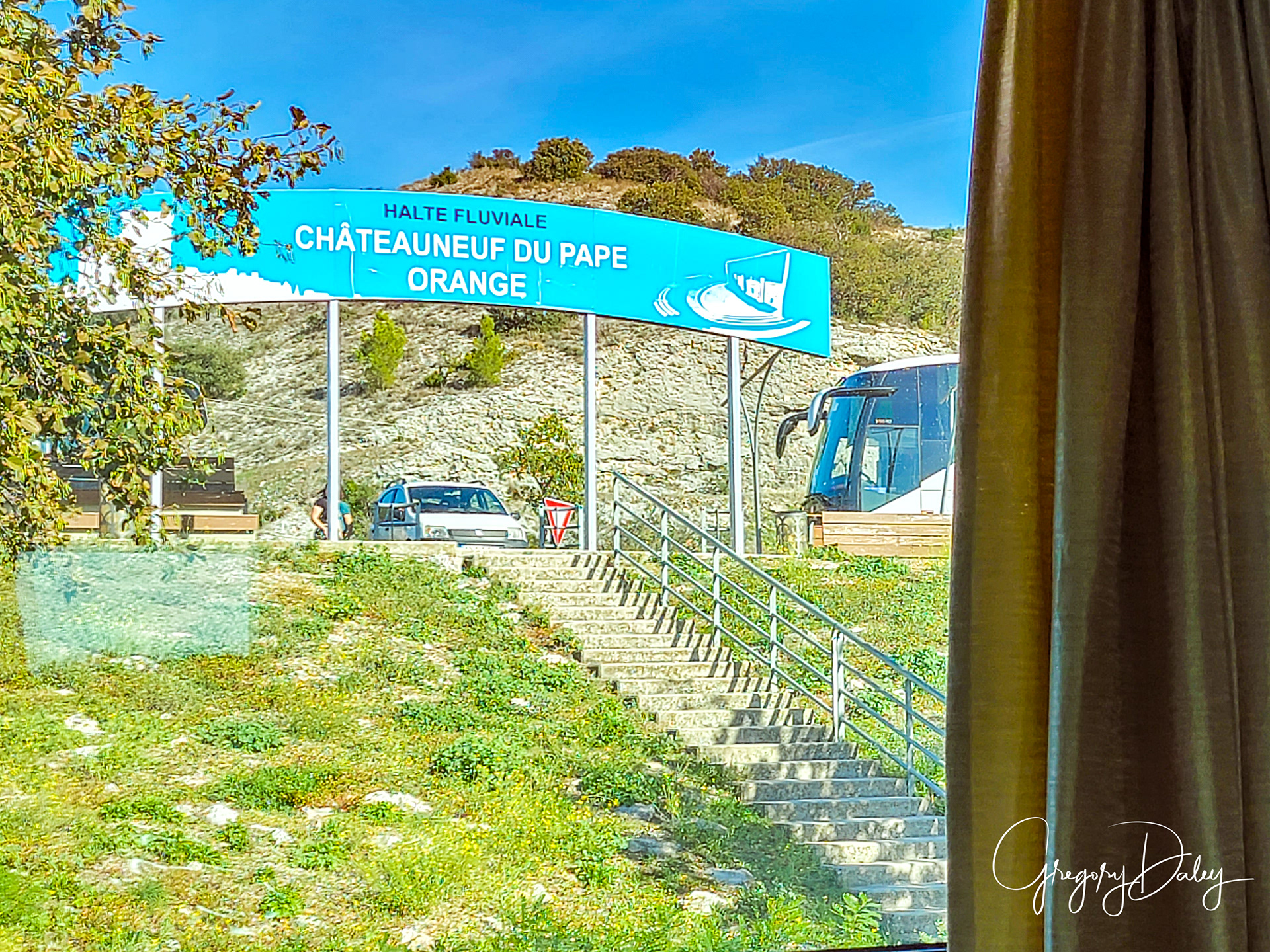




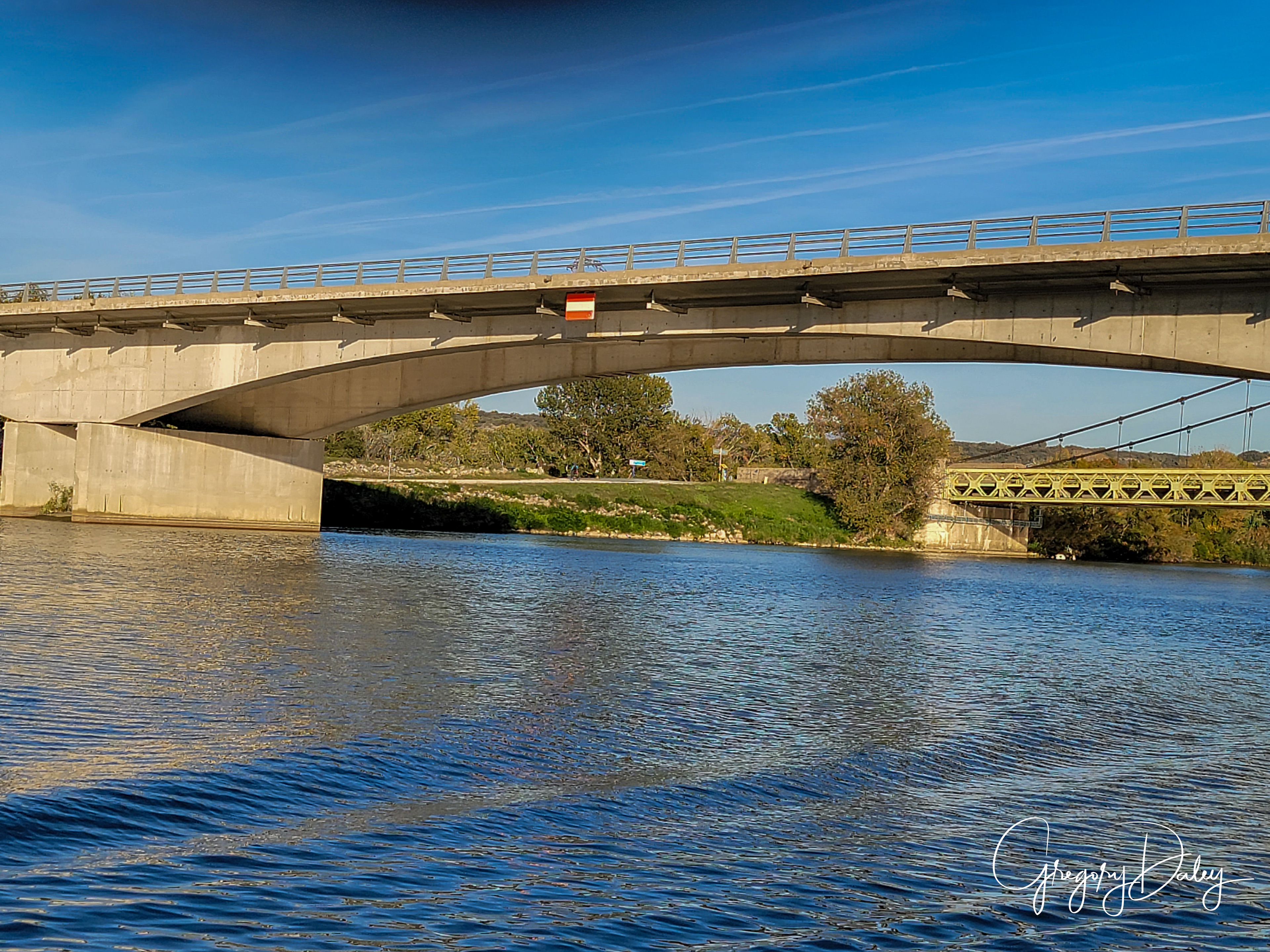

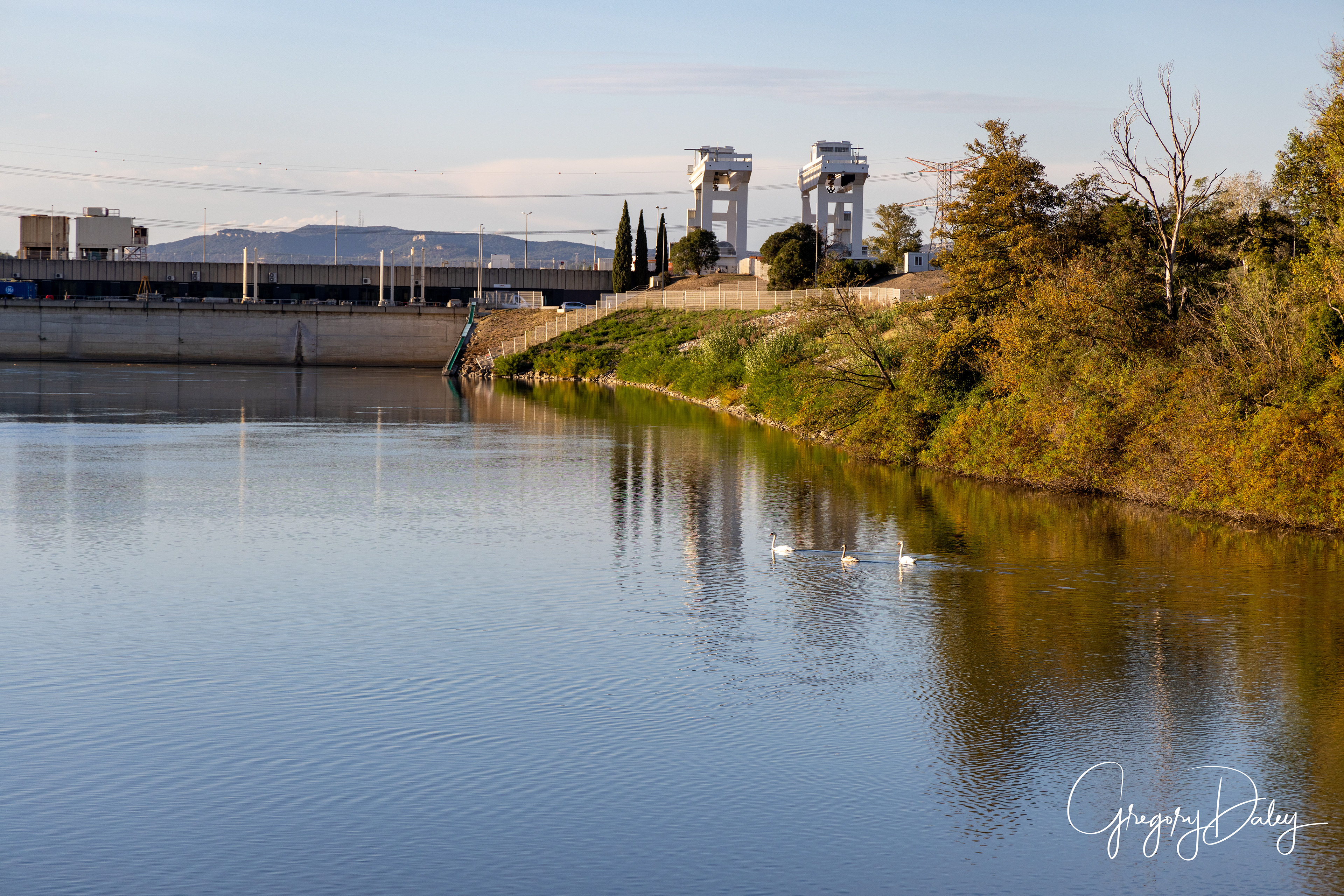
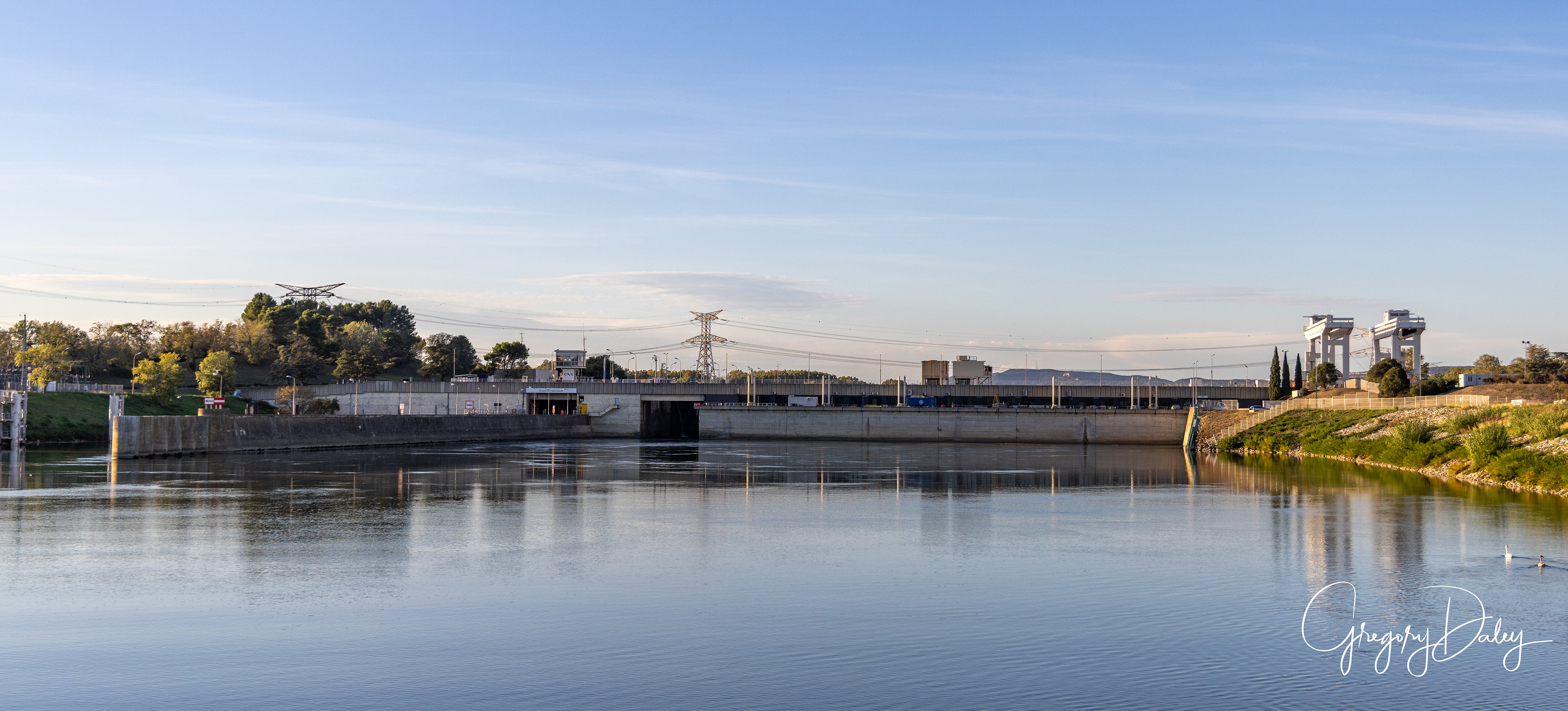


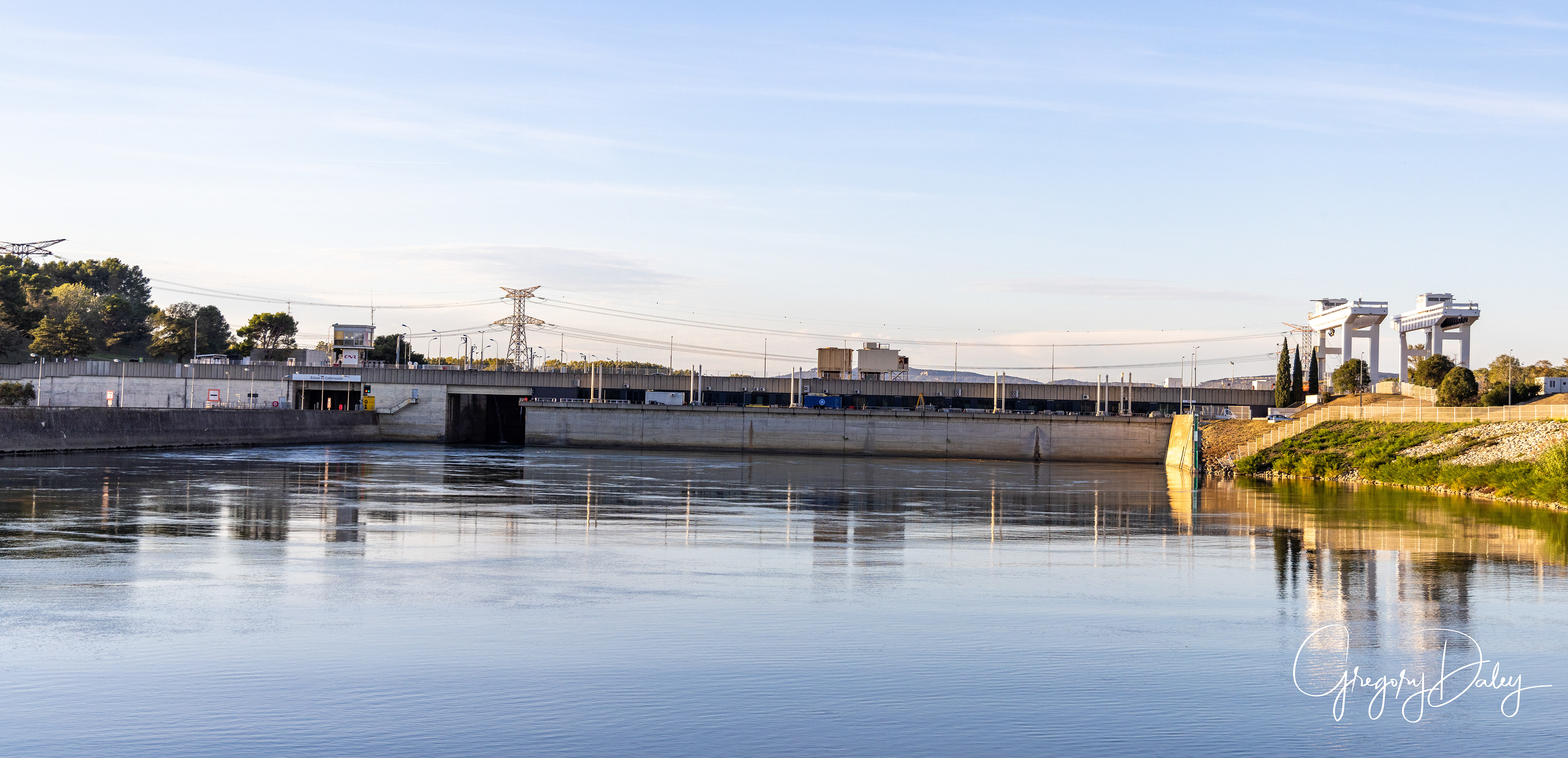
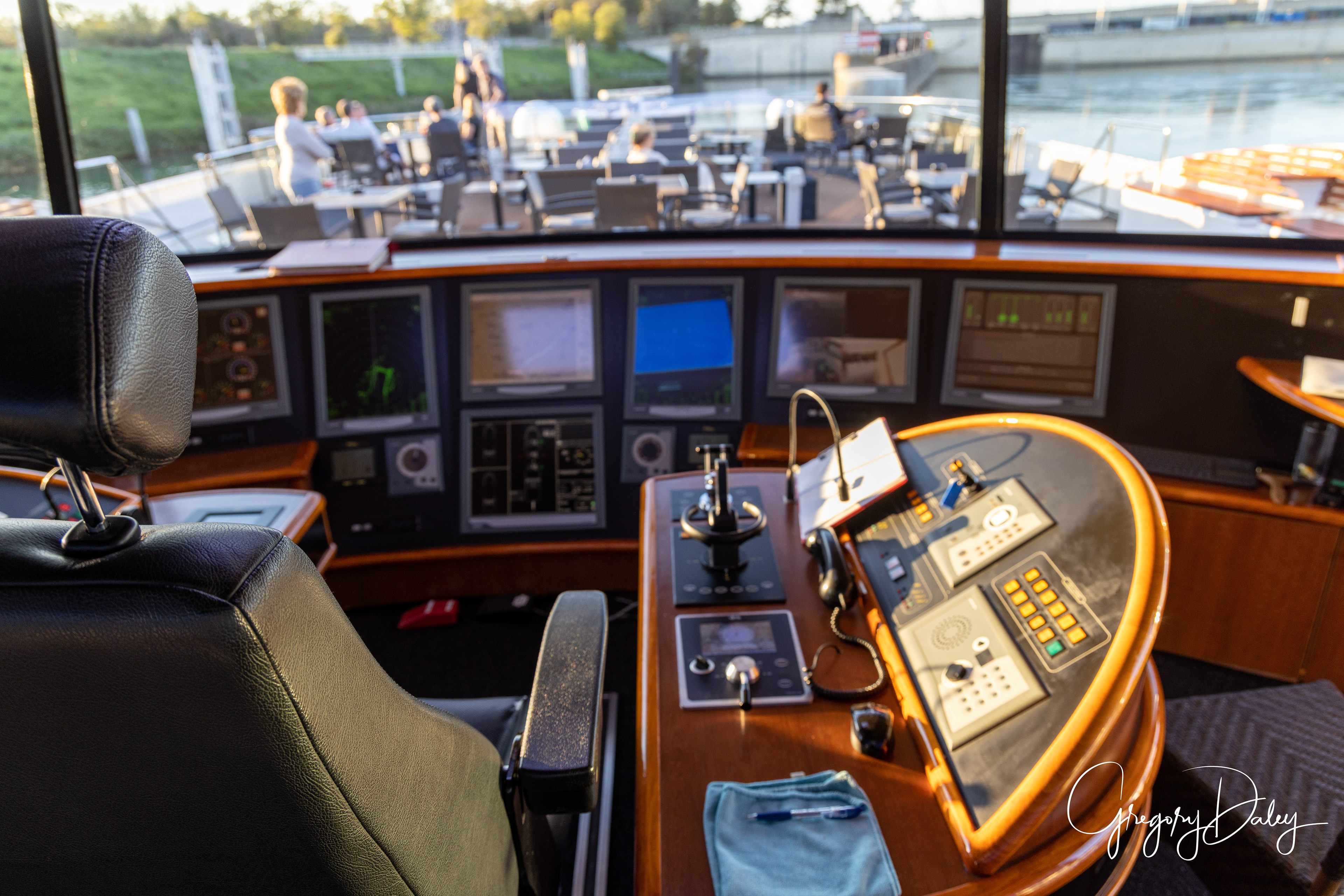



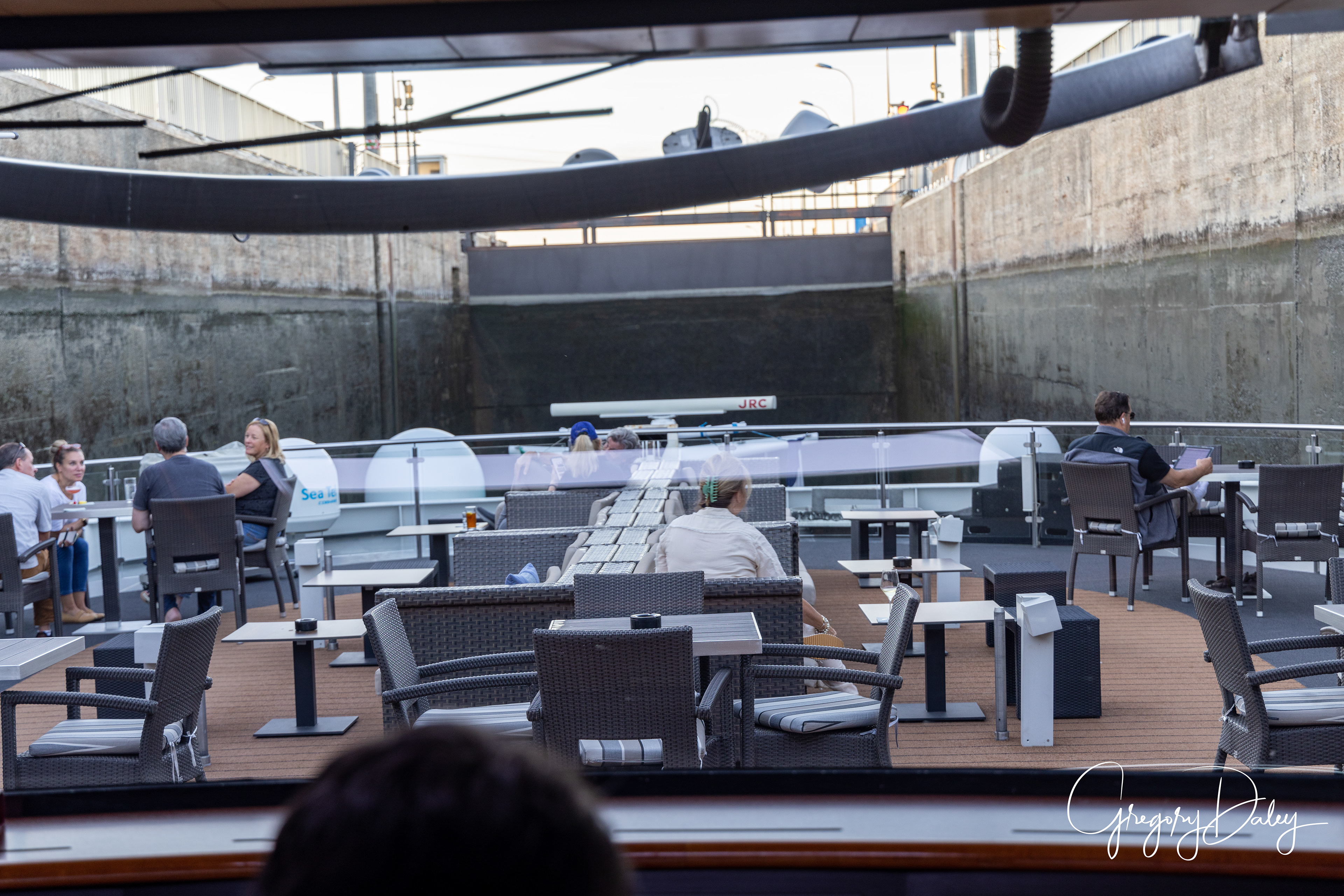
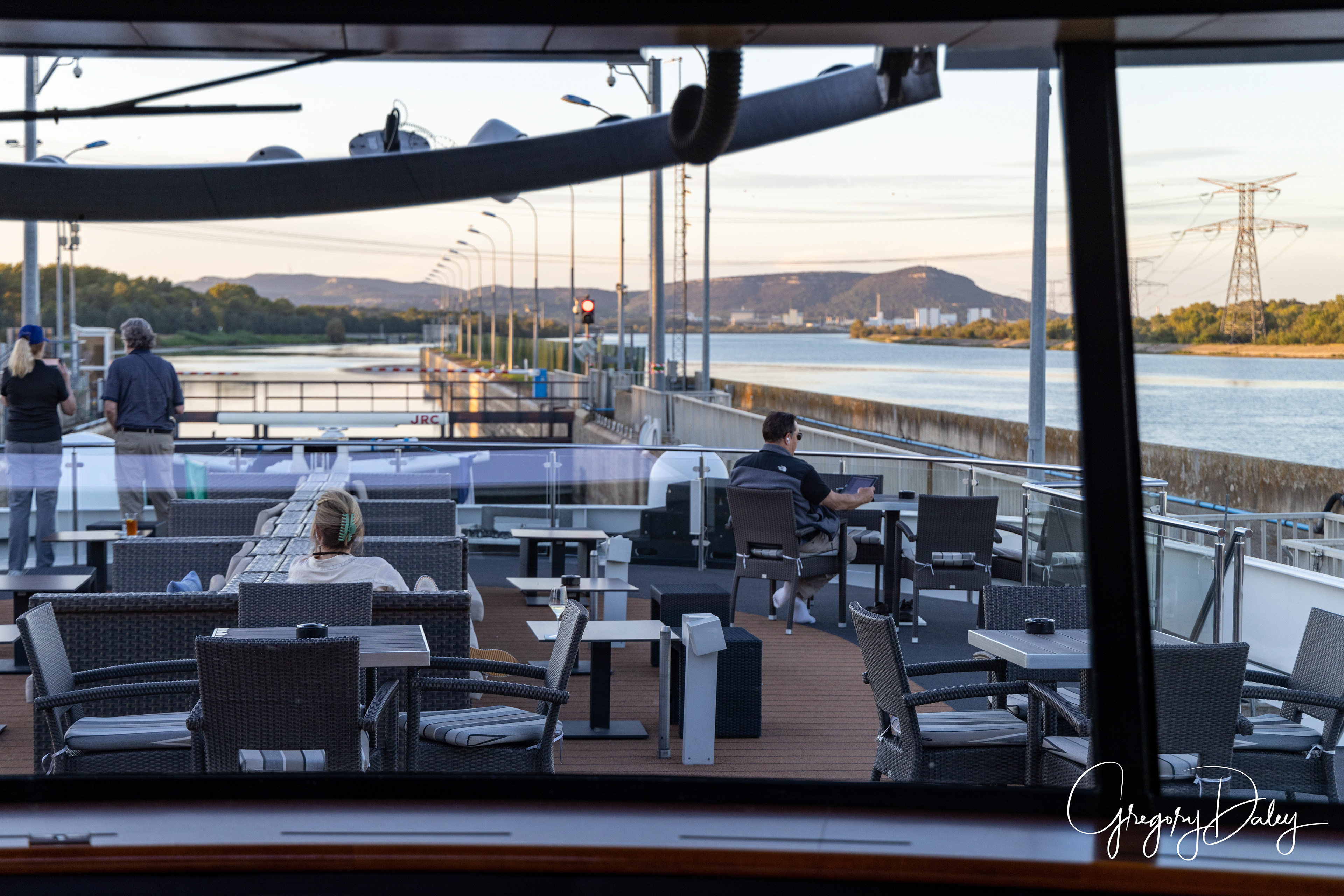
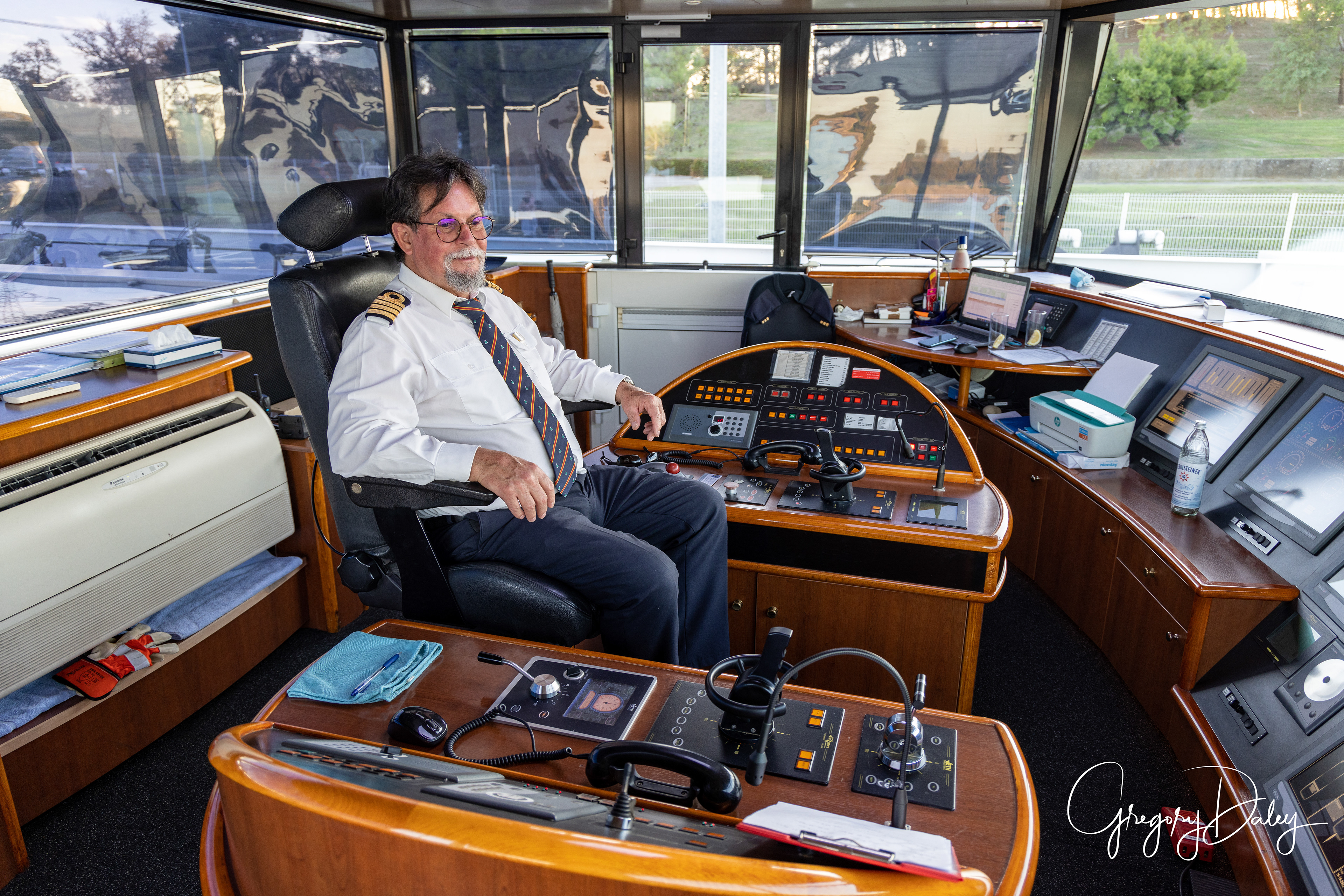
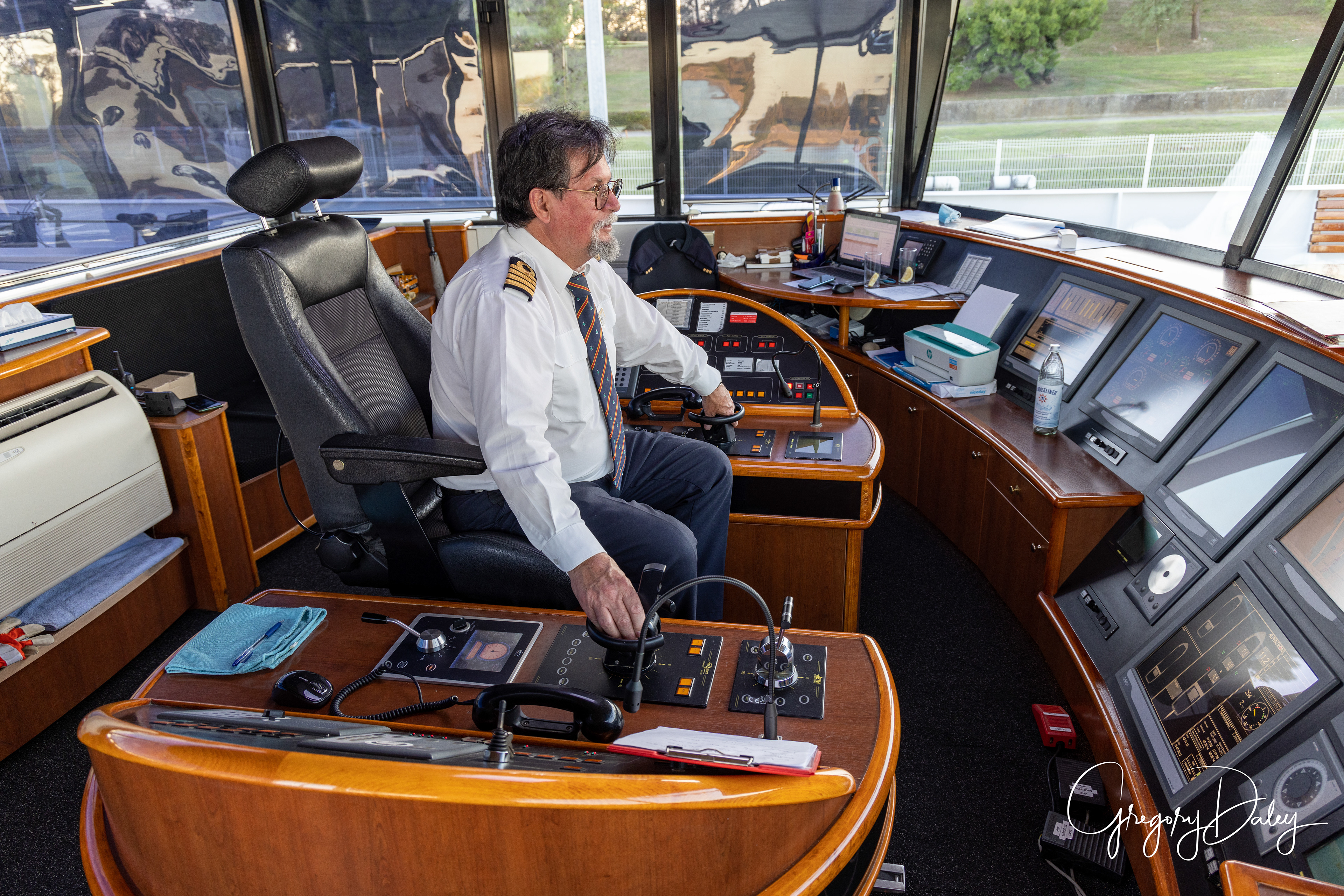

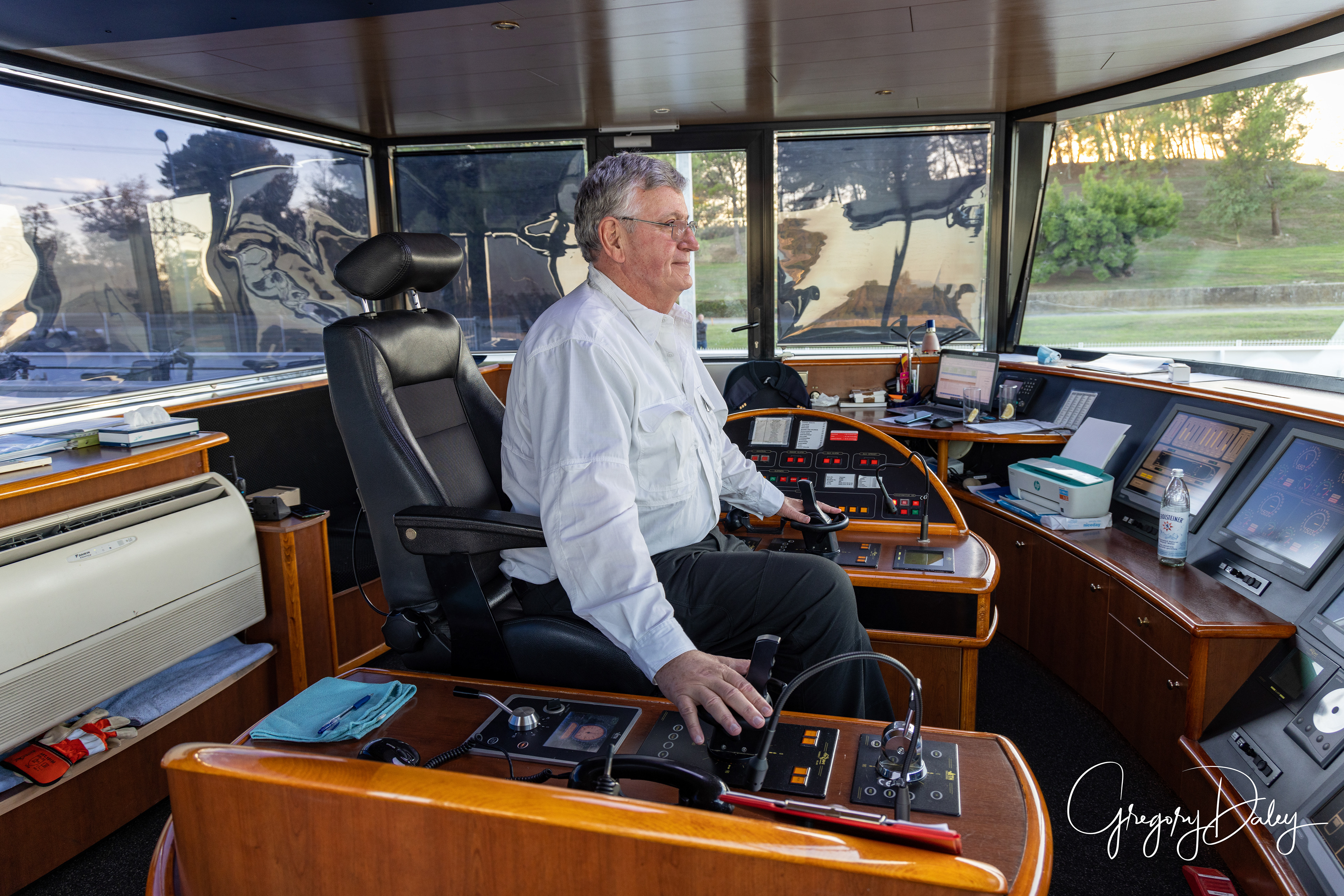

10/15. Day 6 of the tour We did a tour of one of the Châteauneuf-du-Pape wineries. After the tour we tasted four of their wines. It was some of the best Châteauneuf-du-Pape wines I've ever tasted. I spent some time on the bridge of our boat talking to the two captains who were brothers. They were really nice guys. Once they understood that I knew the principles of Z-drives and bow thrusters, they let me drive the boat for a while. Another bucket list checkoff - drive a 361 foot river boat up the Rhône River. Châteauneuf-du-Pape is a commune in the Vaucluse department in the Provence-Alpes-Côte d'Azur region in Southeastern France. The village lies about 1.9 mi to the east of the Rhône and 7.5 mi north of the town of Avignon. As of 2019 the commune had a population of 2,055. A ruined medieval castle sits above the village and dominates the landscape to the south. It was built in the 14th century for Pope John XXII, the second of the popes to reside in Avignon. None of the subsequent Avignon popes stayed in Châteauneuf but after the schism of 1378 the antipope Clement VII sought the security of the castle. With the departure of the popes the castle passed to the archbishop of Avignon, but it was too large and too expensive to maintain and was used as a source of stone for building work in the village. At the time of the Revolution the buildings were sold off and only the donjon was preserved. During the Second World War an attempt was made to demolish the donjon with dynamite by German soldiers but only the northern half was destroyed; the southern half remained intact. Châteauneuf-du-Pape is a French wine, an Appellation d'origine contrôlée (AOC) located around the village of Châteauneuf-du-Pape in the Rhône wine region in southeastern France. It is one of the most renowned appellations of the southern part in the Rhône Valley, and its vineyards are located around Châteauneuf-du-Pape and in neighboring villages, Bédarrides, Courthézon and Sorgues, between Avignon and Orange. They cover slightly more than 7,900 acres and produce over 11,000,000 liters of wine a year, more wine made in this one area of the southern Rhône than in all of the northern Rhône.






















